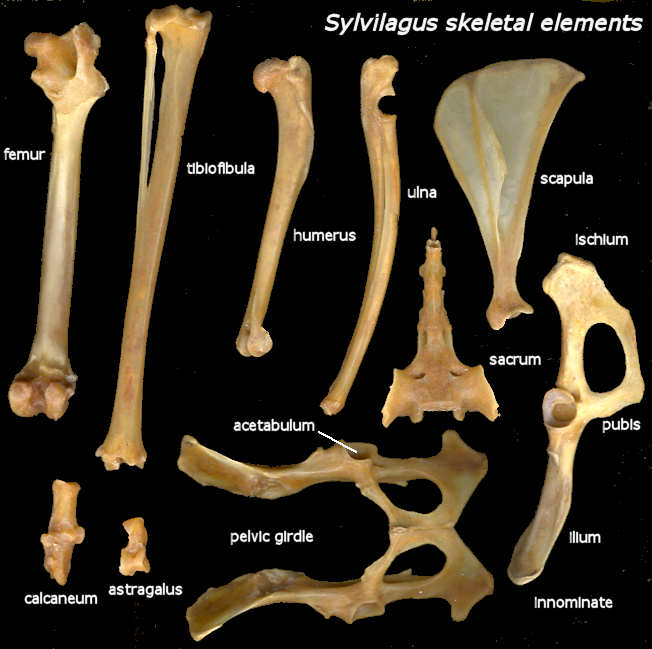 The mammalian skeleton and skull are important and you should be thoroughly familiar with both. See the menu sections on the skull and skeleton.
The mammalian skeleton and skull are important and you should be thoroughly familiar with both. See the menu sections on the skull and skeleton.
You should become familiar with basic orientation terms, several of which are shown on the adjacent figure. Note that the frame of reference for "proximal" and "distal" changes with the element; thus the ulna is distal to the humerus but proximal to the wrist bones. In general, an item or part that is proximal is closer to the center of the body in respect to the other item or part. In general, mammalogists use orientation terms in relation to anatomical structures regardless of the orientation of the mammal; thus, in the upright, bipedal humans, dorsal is the side with the spinal column and the head is anterior. Other terms not shown include "lateral" (to the side) and "medial" (toward the center). You also need to be familiar with basic tooth types and molar cusp terminology; links are shown on the menu.
You should know all of the skull parts labeled on this website and on the Animal Diversity Web link. Generally speaking, except for fusions and losses, elements of the skull and skeleton differ primarily in relative proportions, and thus you should be able to recognize these elements in a variety of taxa.
Post-cranial skeletal elements that you should be able to identify include 1) the vertebrae (atlas, axis, cervical vertebrae, thoracic vertebrae, lumbar vertebrae, sacrum, sacral vertebrae, and caudal vertebrae. For each of the vertebrae, you need to be able to identify the centrum, anterior and posterior zygapophyses, neural canal, neural arch, neural spine, and transverse process. 2) rib, sternum, clavicle, scapula (including scapula spine, acromion process, and coracoid process) 3) innominate and its parts and structures: ilium, ischium, pubis, and acetabulum 4) All limb long bones: humerus, radius, ulna, femur, tibia, and fibula. Individual structures on appropriate long bones that you should know include head, trochanter (first, second, and third as appropriate), olecranon process, and semi-lunar notch 5) metapodials (metacarpals and metatarsals) 6) podials (carpals and tarsals; among the tarsals, the astragalus and calcaneum 7) patella, sesemoid bones 8) phalanges 9) baculum (penis bone).
Some of these are not yet on the website, but are to be added.

Many of the skeletal elements of the cottontail rabbits (Sylvilagus) are shown in the figure. Note that the tibia and fibula are partially fused and each innominate is made up of three elements that fuse in the adult mammal.
Last Update: 16 Jan 2008
Centennial Museum and Department of Biological Sciences, The University of Texas at El Paso